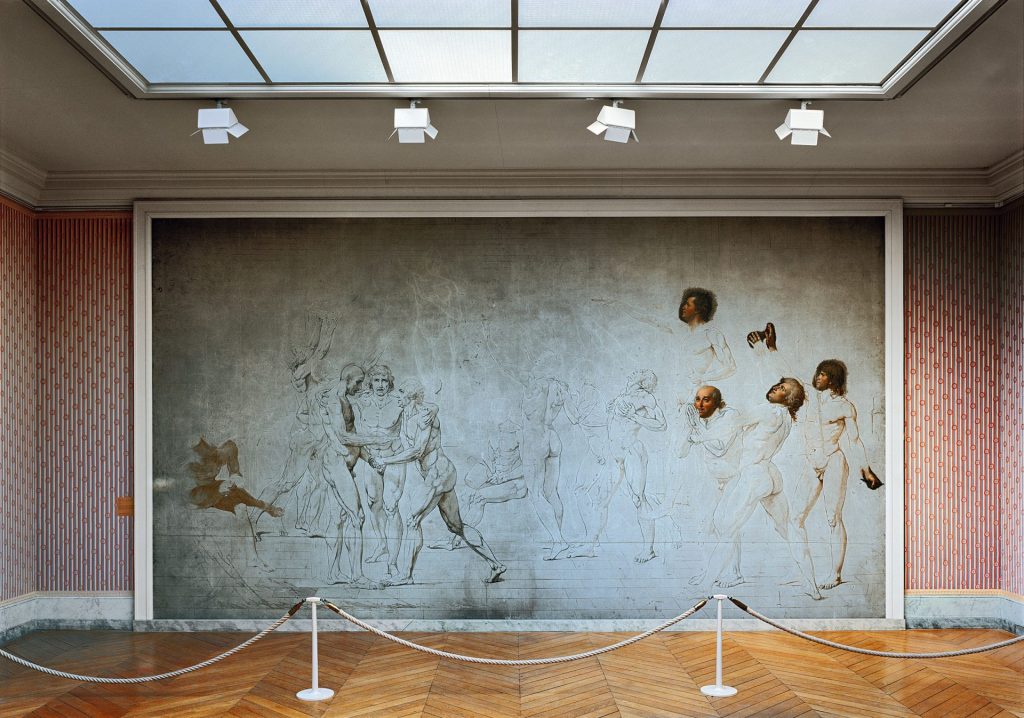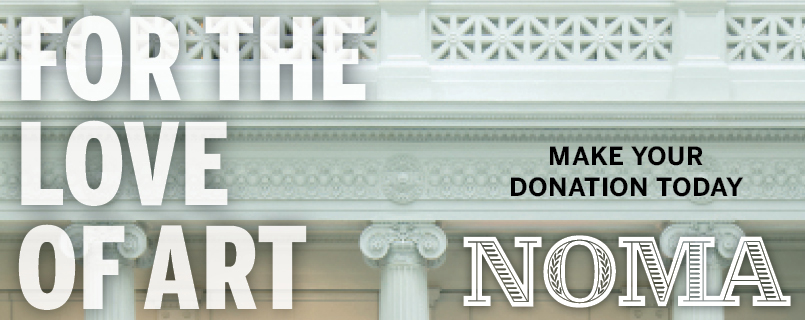
Robert Polidori (Canadian-American, born 1951), Le Serment du Jeu de paume, 20 juin 1789, MV 5841, by Jacques-Louis David, 1791, 2016. Currently on loan to NOMA from a private collection.
Over three decades, renowned photographer Robert Polidori has photographed Versailles. Together, the pictures document the transformation of the complex from a decadent symbol of imperial grandeur to a modern museum, whose architecture and contents are almost impossible to maintain. In these images we witness what Polidori once called “society’s superego,” an attempt to reconstruct the past according to our own contemporary worldview. His photographs probingly peel back the various layers of history, framing the building and its contents as something very much in the making.
As we consider this series in the context of Bastille Day, the day that commemorates the pivotal moment in the French Revolution when citizens stormed the French monarchy’s political prison, one Polidori photograph has special significance. This image embodies the multiple historical layers that Polidori seeks to unravel in his photographs. First there is the painting itself, an unfinished canvas by Jacques-Louis David that depicts a historical moment that took place less than a month before the storming of the Bastille.
On June 20, 1789, members of the French Third Estate (the name given to the largest, but poorest, contingent of French society) found that they had been locked out of budget negotiations in the main hall at Versailles. Joseph-Ignace Guillotin (who later would advocate for the “humane” tool of execution that bears his name) suggested that the group instead meet at Versailles’s nearby tennis courts. There, they pledged the Serment de Jeu de paume or “Oath of the Tennis Courts,” promising not to disband until they had written a new constitution for the French nation.
David’s painting represents the taking of the oath, but remained unfinished, because by the time the artist returned to it, the political pendulum had begun to swing back in the other direction, and pro-revolutionary sentiment, even in picture form, would have potentially fatal consequences. The fact that a few particular heads are the most finished part of the painting ironically calls to mind the rampant beheading during this moment at the guillotine (or, as its supporters called it, “the patriotic shortener”).
Polidori frames this complex political canvas as it hangs today, roped off in a room at Versailles. In doing so, he directly addresses the contradiction that is French history, a story in which a painting depicting the moment of the eradication of monarchy can still be presented in the halls of the ultimate symbol of that monarchy.
—Russell Lord, Freeman Family Curator of Photographs, Prints, and Drawings
NOMA is committed to uniting, inspiring, and engaging diverse communities and cultures through the arts—now more than ever. Your gift makes a direct and immediate impact as we plan exciting new exhibitions, organize insightful programs in the museum and Besthoff Sculpture Garden, and develop new ways for you to #ExploreNOMA.
